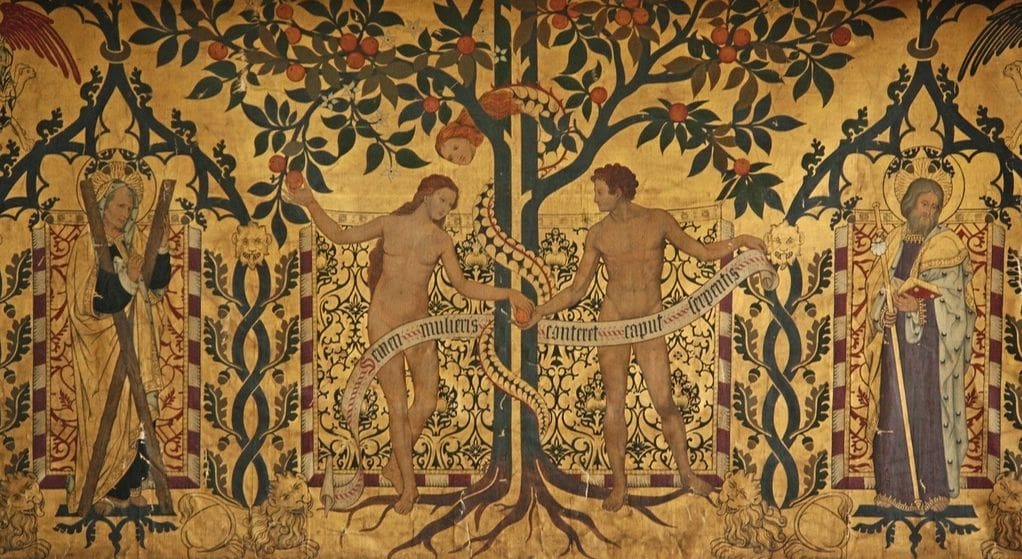Don’t stop me if you’ve heard this story before. It’s worth hearing again—especially with Father’s Day around the corner.
In the beginning, there was a man named Adam, and he had a great deal going for him. He had an intimate relationship with God—the Lord walked in the same garden and called to him by name—and, as a result, he also formed a beautiful relationship with his wife, his own self, and his surroundings. But one day, leaning into a tree, he turned away from God, turned on his wife, and turned his life (and the world) upside down.
In the middle, there was a second man, let’s call him “the second Adam”—but his real name is Jesus. This man also had an intimate relationship with God—in fact, he was God’s very Son. Jesus was also tempted to turn away from God, but, unlike that first Adam, he chose God the Father over all other things. This decision entailed a great amount of suffering which, ultimately, he needn’t have gone through. (But of course that’s love for you—always willing to endure anything for the good of the other!) And not only did he choose God, again by leaning into a tree, but he also stayed faithful to—and died for—the wife who was born from his side in blood and water. Because of this loving decision, this man returns to God, returns to his Bride, and returns life to its original—and better—state.
In the end, there is a third man named Adam, or—better—many men related to this first and second Adam—men like you and me. Like the first Adam, we’re often tempted, and we often fall. We settle for lies and half-truths, and we seek to satisfy ourselves with what cannot do. Rather than dying for our bride, we often choose ourselves. But like the second Adam, we are each a son of God. Through water and the Spirit we each are born from the Church, our Mother. By grace and virtue, we each seek life in the Trinity, and through self-sacrificing love, we each lead our spouse to this same joy.
By nature, this last Adam—mankind—is related to the first; by grace, he is related to the second. And for this reason, all three men—the first, second, and third Adam—are all present at Mass.
The first Adam is present: fallen, wounded, selfish, weak, dead.
The second Adam is present: risen, healed, self-less, strong, alive.
The third Adam is present: fallen like the first, but risen and restored like the second. At least, this restoration is what is supposed to happen when he is at Mass.
The Mass is the manliest moment this side of heaven, for in it, the perfect Man, in perfect humility and obedience, carries out the most powerful, virtuous, and manly act history has ever recorded. (In fact, each of these words are related at their root: power from the Latin vis and vires; virtue from the Latin virtus; and man from the Latin, vir.) Each element of the Mass—its ministers, its music, its art and architecture, its signs and symbols—are meant to manifest the work of this God-made-man (even if, at times, these elements fall short of perfection).
But the purpose of Jesus Christ, the second Adam, in the Mass is not simply for him to be present: rather, his presence is meant to transform us, to make us—who are related to both Adams—less like the first and more like the second.
Speaking of heaven—which is what the Mass is, our participation in the wedding banquet of the eternal Jerusalem—St. John says that seeing Christ will transform us: “When he is revealed, we shall be like him, for we shall see him as he is” (1 John 3:2).
St. Paul calls us to be transformed by the renewal of our minds, to be living sacrifices (Romans 12:1). He calls us to mature manhood and the full stature of Christ (Ephesians 4:13).
St. Irenaeus, in light of revelation’s teaching, puts it this way: “The glory of God is man fully alive, and the life of man is the vision of God.” Fullness of life, virtue, power, manliness (and, in a different way, womanliness), starts with an encounter with Jesus, who is both God and the perfect man. And we can behold him most clearly in the Mass: Ecce, homo!
Go, then, to Mass, for at this moment a great transformation can take place: here the last Adam (like you and me) becomes less like the first and more like the second, to the salvation of all and the glory of the Father.



